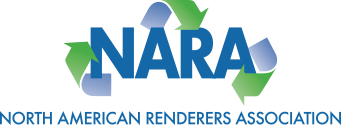With National Rendering Day coming up on April 21st, it’s the perfect time to introduce kids to the fascinating and sustainable world of rendering!
One of NARA’s priorities is to strengthen rendering education from 4-H age all the way through college and university programs, so we have developed some fun, interactive activities for schools and learning institutions – but you don’t have to be a professional teacher to help kids understand rendering’s importance!
Try one of the hands-on activities below to teach your children about sustainability, resourcefulness, and how rendering helps reduce waste! (Kids: Be sure to have adult supervision when trying any of these!)
- Cooking and Collecting Grease (Bacon Rendering Activity)
- Objective: Show how fats are extracted from food and discuss their potential uses.
- Activity:
- Cook bacon in a pan and observe how the fat renders (melts off).
- Pour the collected grease into a clear container and let it cool.
- Discuss how this grease can be repurposed (e.g., biodiesel, soap making, animal feed).
- Bonus: Make a grease candle by adding a wick to solidified grease.
- Making Soap from Rendered Fat
- Objective: Demonstrate how rendered animal fat can be upcycled into useful products.
- Activity:
- Use rendered animal fat (lard or tallow) mixed with lye to make homemade soap.
- Discuss how early civilizations utilized every part of an animal to avoid waste.
- Food Waste Sorting & Composting Challenge
- Objective: Teach kids how food scraps can be rendered into new products or composted instead of wasted.
- Activity:
- Gather food waste items (e.g., vegetable peels, eggshells, meat scraps, grease).
- Sort into categories: renderable (grease, bones, meat scraps), compostable, and landfill.
- Discuss what happens to food waste in industrial settings versus at home.
- Explain the rendering process and the many uses for rendered materials.
- Food Waste Audit (Tracking & Reducing Waste)
- Objective: Encourage kids to analyze their own food waste habits.
- Activity:
- Track all food waste for a week.
- Categorize waste: perishable, leftovers, packaging, etc.
- Brainstorm ways to reduce waste, such as meal planning, composting, or donating food.
- Discuss how rendering helps prevent certain food waste from going to landfills.
- The Life Cycle of a French Fry: Cooking Oil to Biofuel
- Objective: Show how used cooking oil is recycled into biodiesel.
- Activity:
- Cook French fries in oil.
- Collect the used oil and discuss how it can be recycled into biodiesel.
- Research real-world biodiesel success stories (e.g., buses running on waste oil).
- Watch NARA’s podcast episode about biofuels here: NARA Biofuels Podcast.
- Mystery Food Ingredients Challenge
- Objective: Help kids recognize that many everyday items contain rendered products.
- Activity:
- Present a list of mystery products (e.g., Jell-O, soap, candles, crayons, pet food, fireworks).
- Have kids guess which contain rendered material or fats.
- Reveal the answers and discuss how rendering reduces waste by using every part of the animal.
By engaging in these fun activities, kids can develop a deeper understanding of rendering’s role in sustainability and the circular economy.

